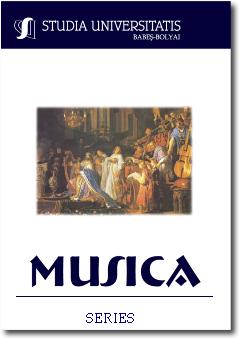TROIS POÈMES DE STÉPHANE MALLARMÉ: A DEBUSSY-RAVEL COMPARISON
TROIS POÈMES DE STÉPHANE MALLARMÉ: A DEBUSSY-RAVEL COMPARISON
Author(s): Attila FodorSubject(s): Music
Published by: Studia Universitatis Babes-Bolyai
Keywords: Mallarmé; mélodies; Debussy; Ravel; comparison; text-music.
Summary/Abstract: Trois Poèmes de Stèphane Mallarmè: a Debussy - Ravel Comparison. The two cycles of mélodies, composed by Debussy and Ravel in the same year 1913, represent not only one of the most curious coincidences of modern French music, but also offer a great opportuneness for scholars to investigate in comparison their creative view on the highly crafted and refined art of Mallarmé. Despite their large number of mélodies and a particular affinity for the symbolist poet, the relatively unnoticeable examples of settings based on his oeuvre shows an avoidance of the greatly musical and hermetic verses, characteristic for his mature style. Even the dreamy, noble and playful juvenile poems commonly put on music by the two composers in these cycles (Soupir and Placet futile), are treated with a great care in order to preserve their inner musicality. Thus, the quasi-independent vocal line, with a pronounced recitative character is carried by an almost autonomous musical accompaniment, which oscillates between figurative and expressive states. Beyond the natural differences of the two settings resulting from the particular view of their creators, there are also some important similarities in the employment of the constructive and expressing devices. Even the third mélodies, based on different verses of Mallarmé’s late period (Éventail by Debussy and Sourgi de la croupe et du bond by Ravel), show at least one significant characteristic in common: unlike the former two conceived in a basically tonal context, they rather present an expansion of these limits toward the atonality, in a vague musical discourse, just in the spirit of the pronounced abstractness of the poems.
Journal: Studia Universitatis Babes-Bolyai - Musica
- Issue Year: 58/2013
- Issue No: 1
- Page Range: 15-29
- Page Count: 15
- Language: English

